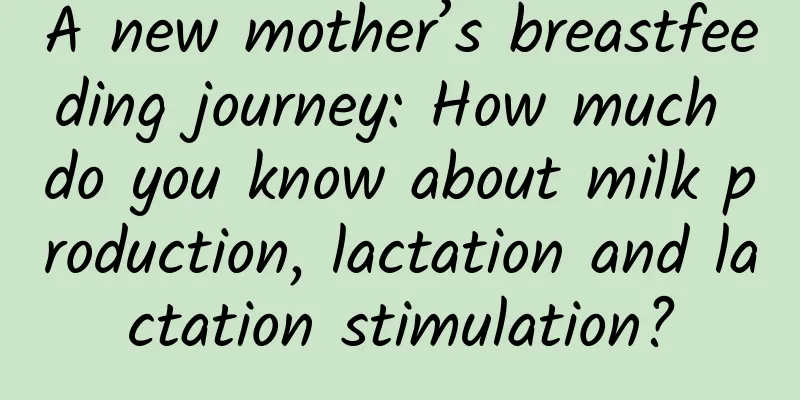A new mother’s breastfeeding journey: How much do you know about milk production, lactation and lactation stimulation?

|
A new mother's breastfeeding journey: how much do you know about milk production, lactation and lactation promotion? 1. Start the breastfeeding journey: start breastfeeding When a new life comes, the new mother faces the initial challenge of breastfeeding - milk production. This process is particularly critical in the early postpartum period, as it not only helps the newborn to suckle breast milk smoothly, but also stimulates the mammary glands to begin secreting milk. For mothers who give birth naturally, this usually happens within 24 hours after delivery; for mothers who have undergone a caesarean section, it may take 48 hours. Milk production is the initial tacit understanding and connection between a new mother and her baby. 2. Breast dredging: As breastfeeding progresses, new mothers may experience breast pain or poor milk secretion. At this time, breastfeeding becomes particularly important. Through professional massage techniques or other methods, the mammary glands can be effectively unblocked to ensure that the milk can flow out smoothly. This process not only relieves the mother's discomfort, but also prevents potential problems such as mastitis, laying the foundation for continued breastfeeding. 3. Insufficient milk: lactation However, the physical condition of each new mother is different, and some mothers may encounter the problem of insufficient milk secretion. At this time, lactation induction becomes the key. Lactation induction is not just a simple process, it needs to consider the mother's overall physical condition, such as qi and blood conditions, sleep quality, emotional state, etc. Combining traditional Chinese medicine massage techniques, diet therapy and other methods, a period of conditioning can help new mothers gradually increase milk secretion to meet the growing needs of the baby. 4. Wisdom of breastfeeding: first release the fluid and then stimulate it The correct breastfeeding sequence is to first promote lactation and then stimulate lactation. This wise choice not only ensures the physical comfort of the new mother, but also ensures the healthy growth of the baby. Every new mother should understand and follow this principle and choose the most suitable feeding method according to her actual situation. After all, breastfeeding is not only a physiological process, but also a transmission of maternal love and emotional communication. |
>>: Treatment of inverted nipples
Recommend
What to do if the amount of leucorrhea is small
The amount of leucorrhea secretion is not a fixed...
Sparking heated discussion: Can microplastics in takeout really invade the brain within two hours?
Previously, the topic #Microplastics in takeout c...
What to do if a woman has abnormal leucorrhea
Leucorrhea is a unique secretion and physiologica...
What to do if a woman has occult blood in her urine test
Occult blood in women's urine tests may be du...
What to do if uterine cysts grow
Cyst is a very complicated disease. Once it occur...
39 days of pregnancy progesterone and hcg value
During pregnancy, the female hormones of pregnant...
Inverted nipple lying flat
Not everyone's breasts are fully developed. S...
Are female contraceptive pills safe?
In fact, external contraceptives for female frien...
Can pregnant women watch TV?
Television is a must-have leisure activity for ev...
How long does it take for a woman to get pregnant again after having her IUD removed?
Due to government policies, many families take co...
White pustules on breastfeeding nipples
Mothers who are breastfeeding always pay special ...
Is Huangqi Shengmai Yin suitable for women?
Astragalus is a relatively common Chinese medicin...
Welcome to the colorful world of dizziness – vertigo and vertigo
Welcome to the colorful world of "dizzy"...
What happens if gynecological inflammation is delayed for a long time?
Once gynecological inflammation occurs, you must ...
Blood clots at the beginning of menstruation
For women, blood clots during menstruation are a ...









